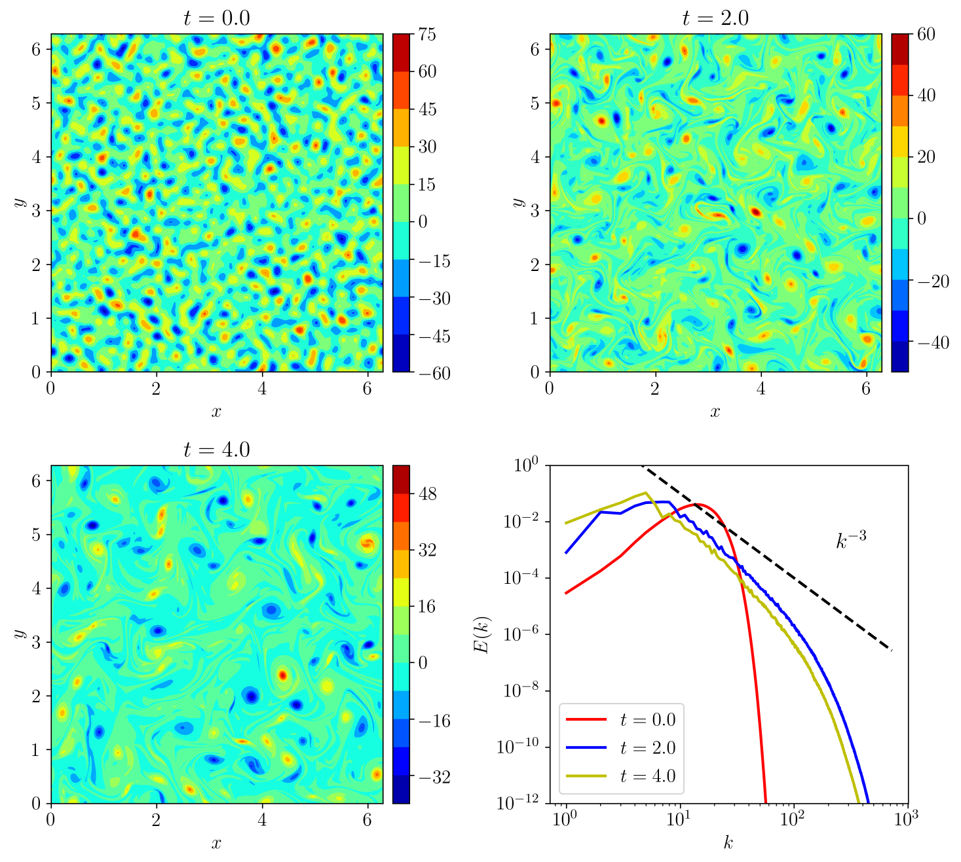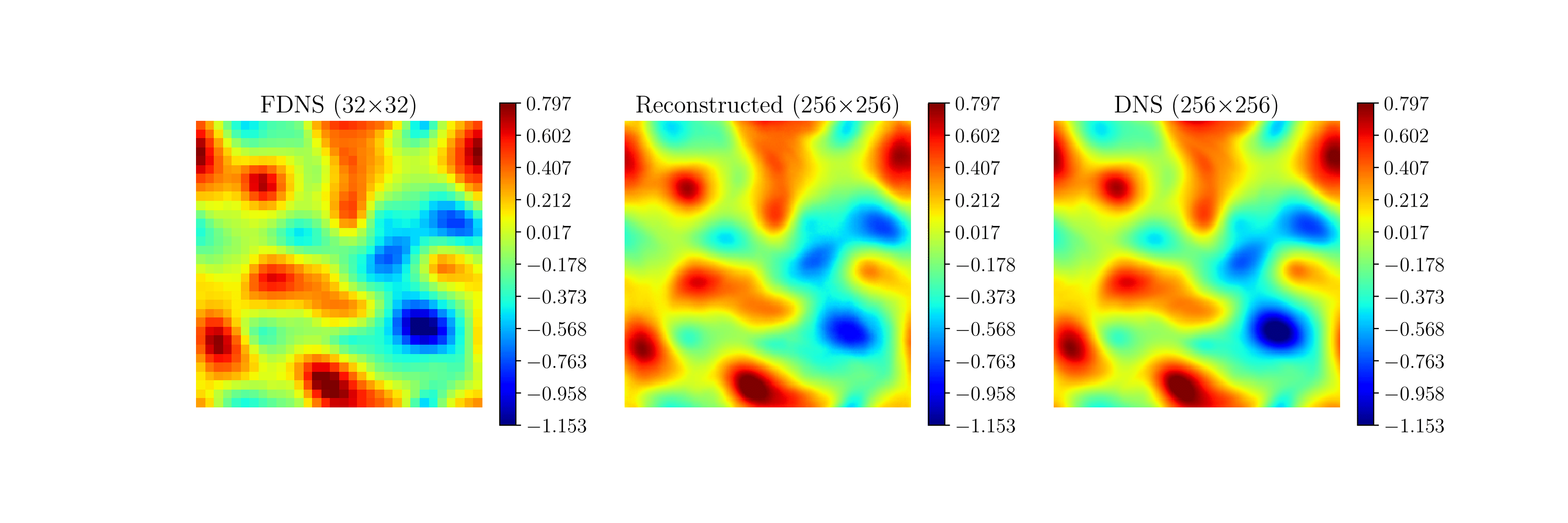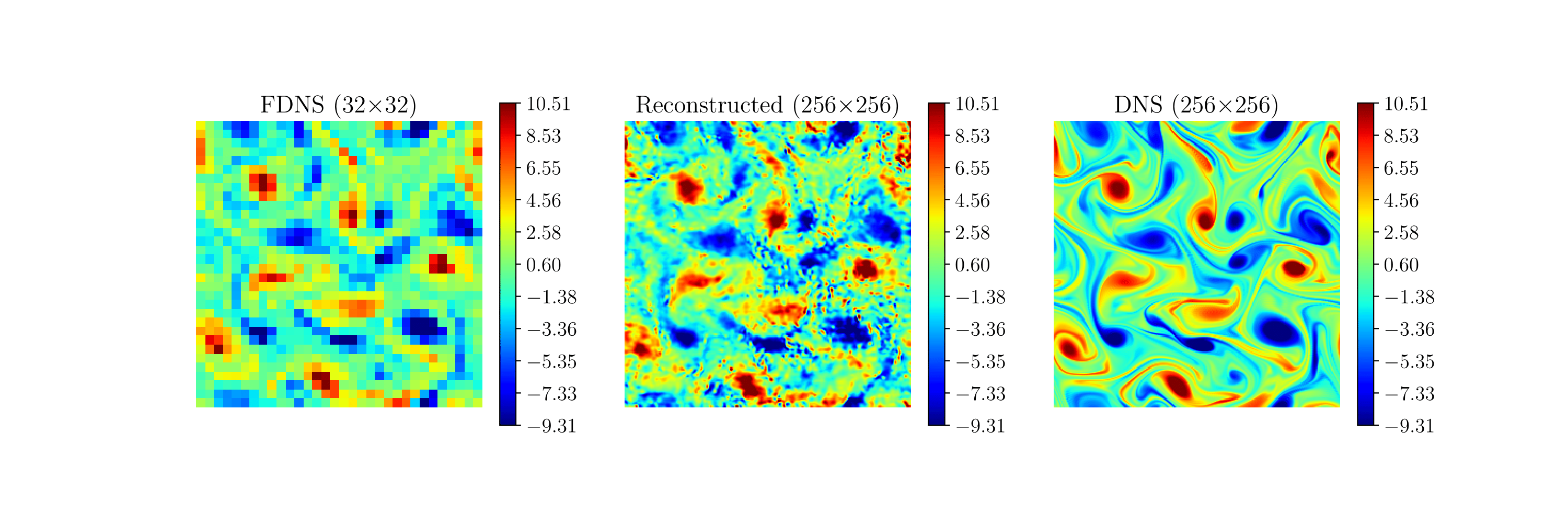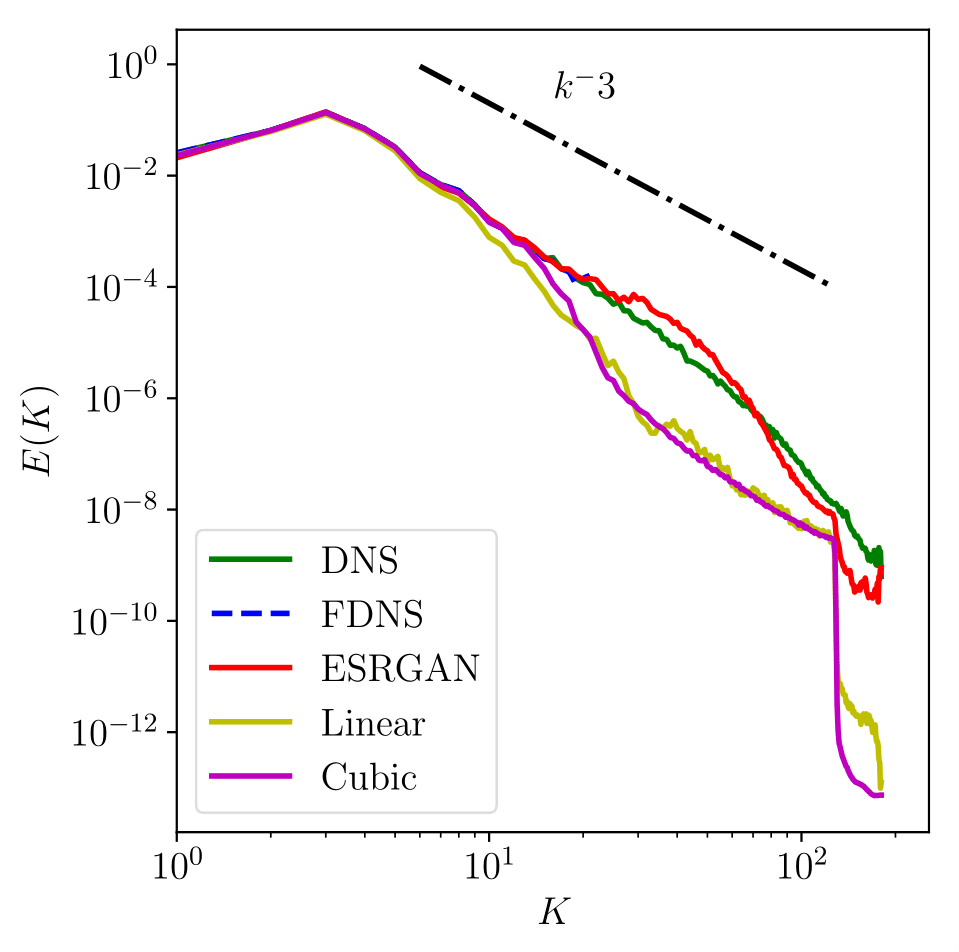#Abstract
Turbulence is a complex flow phenomenon characterized by chaotic multiscale interactions which can be accurately modeled using direct numerical simulations (DNS). However, DNS is computationally prohibitive in many cases due to the fine grid requirement to resolve the high frequency content of the flow. Large eddy simulation (LES) attempts to relax this computational burden by resolving only large scales and modeling small scale interactions which is termed as the subgrid scale (SGS) modeling. One of the approaches to SGS modeling is approximate deconvolution (AD) procedure. In this work, we propose to use a machine learning algorithm called generative adversarial networks (GAN) to determine the deconvolved flow field instead of using traditional inverse filtering operation of AD. GANs have been demonstrated for image super-resolution by up sampling low resolution images. We use the enhanced super-resolution GAN (ESRGAN) framework for upscaling physical turbulence fields i.e, low-resolution LES field to super-resolution (close to DNS) field. The resulting super-resolved field can then be utilized to compute the SGS closure model instead of solving AD procedure numerically. In this work, ESRGAN framework is tested to super resolve two-dimensional decaying homogeneous turbulence flow field with physics bases constraints. The reconstruction of turbulent small scales by the proposed framework is evaluated by comparing to energy spectra on both super resolved and DNS field.
Enhanced Super Resolution Generative Adversarial Networks (ESRGAN):
| Generator (G) | Discriminator (D) |
|---|---|
 |
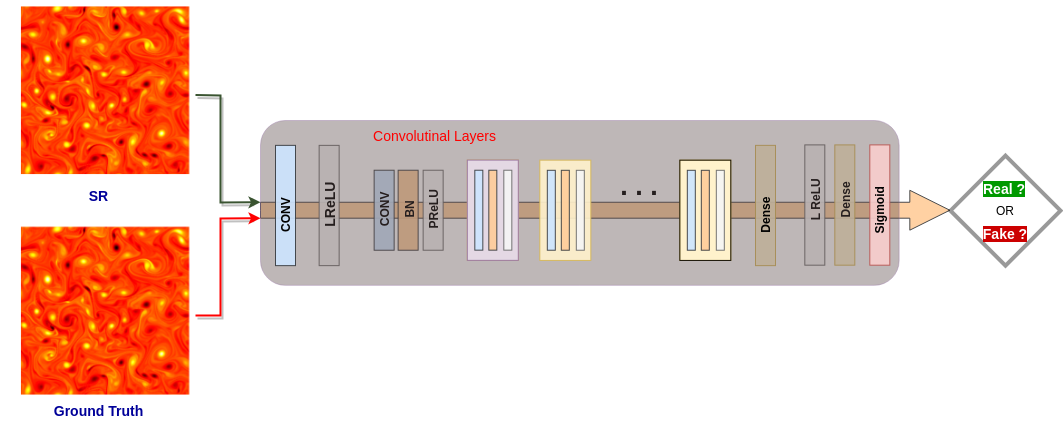 |
2D decaying tubulence Problem:
Reuslts:
References: ##Please find the report in the repository for more detailed analysis##
Future Work:


